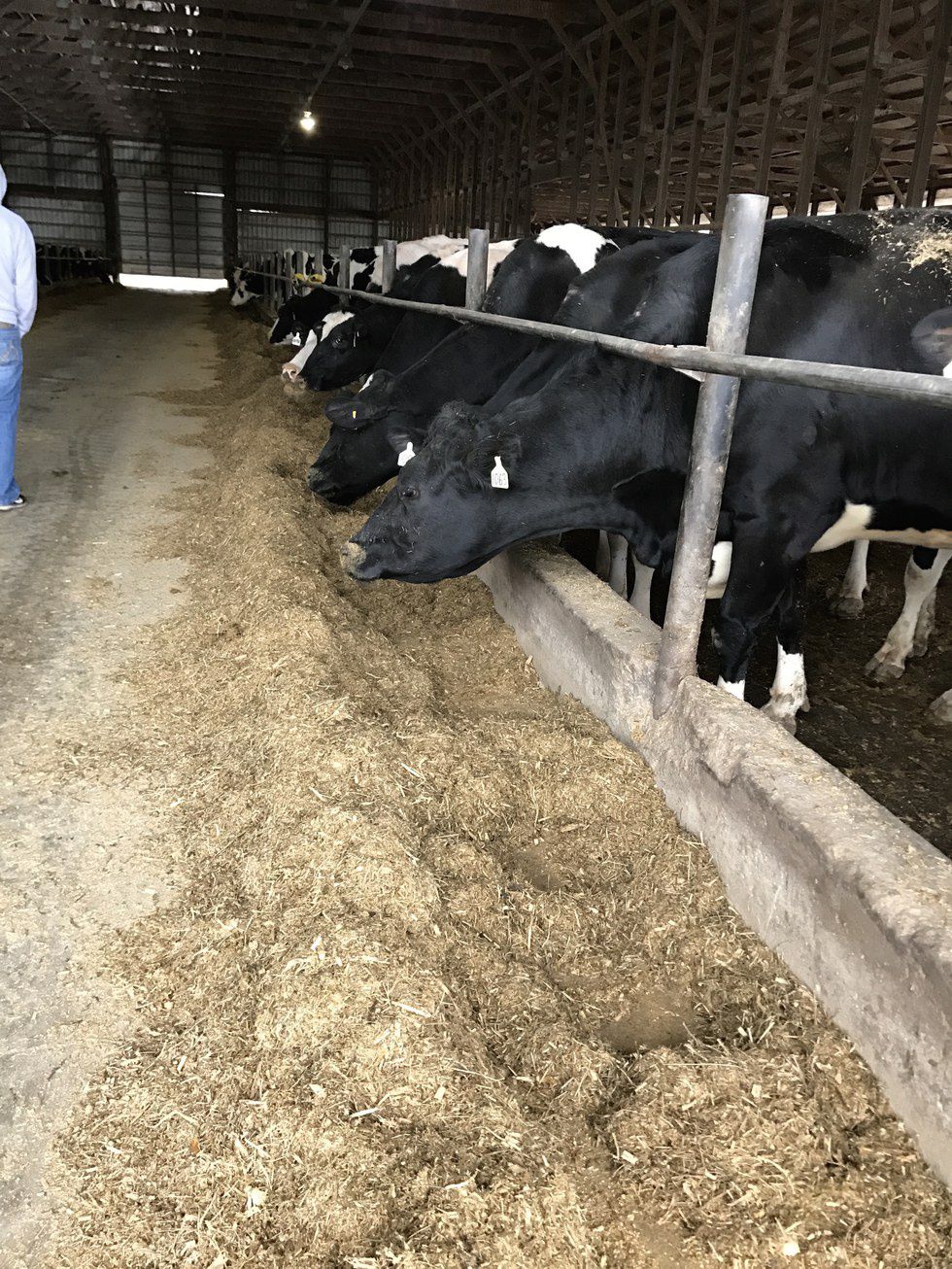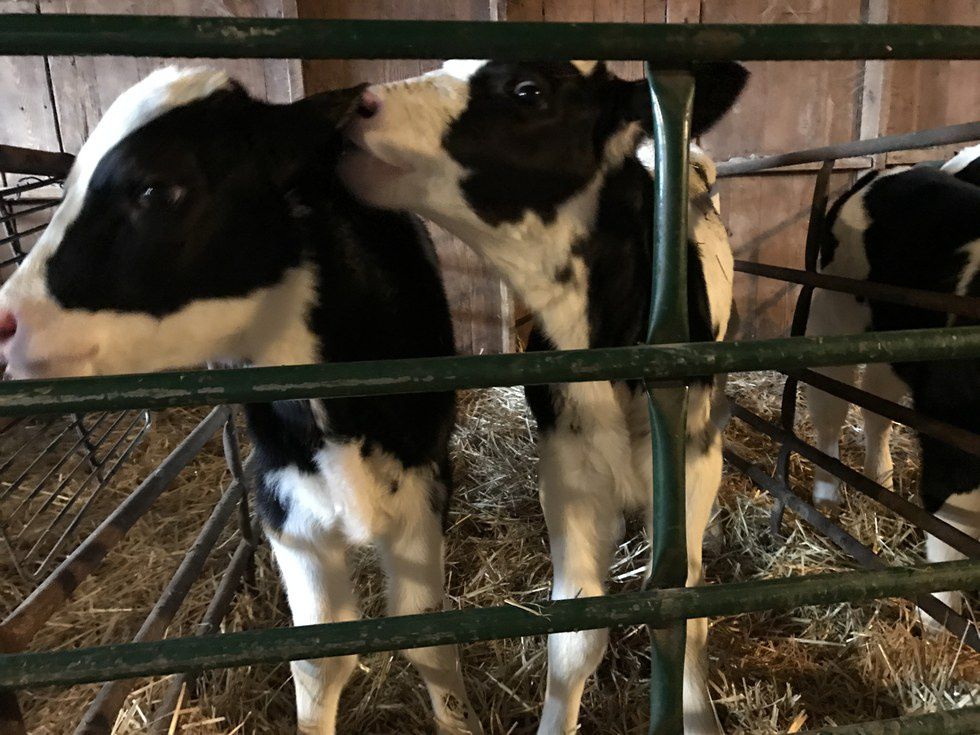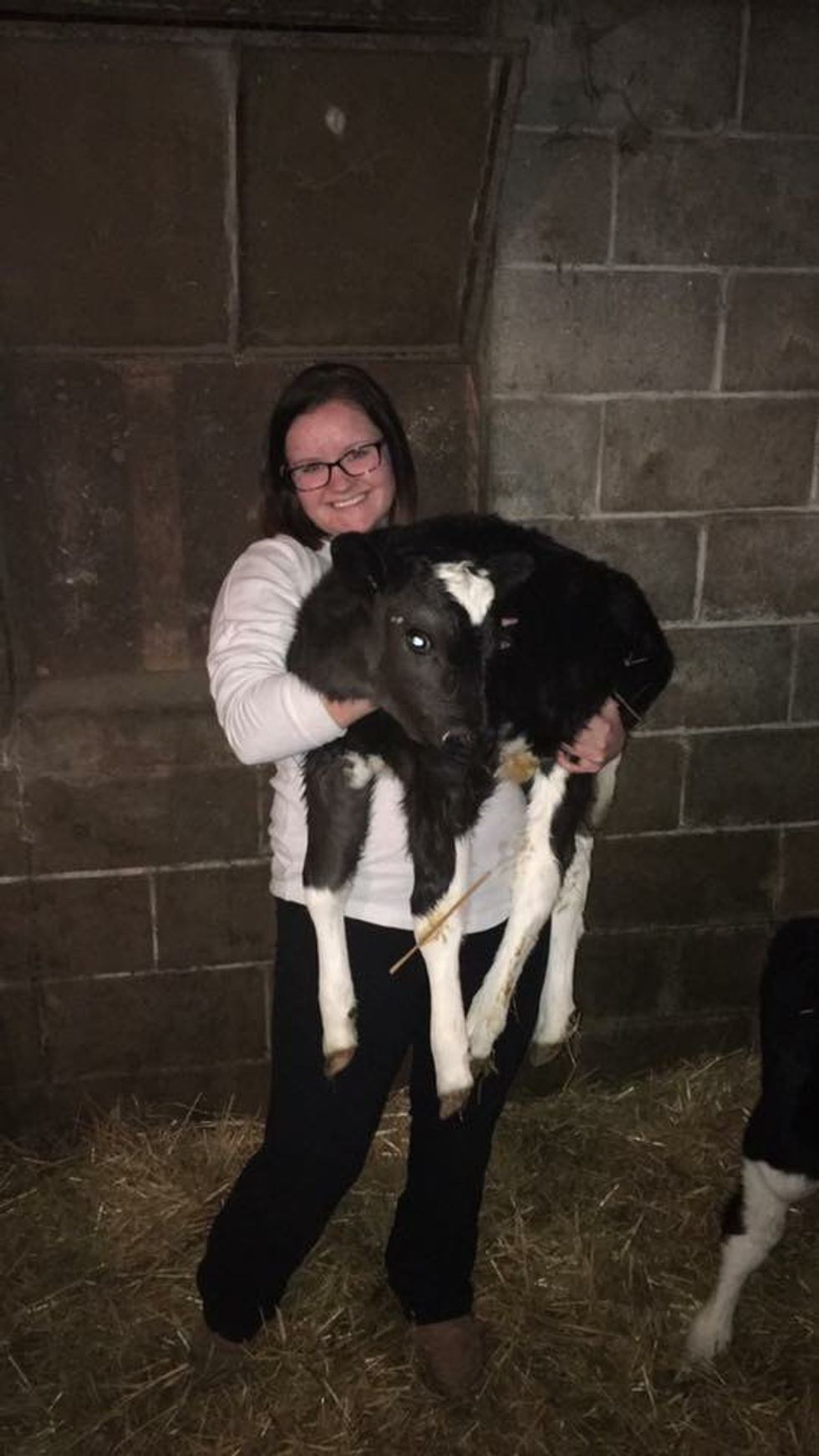As of 2014, there were roughly 9.2 billion dairy cattle in the U.S. producing milk for human and livestock consumption. Milk helps build strong bones, along with supplying other healthy nutrients that human bodies need. On February 15, 2016, an article was posted on Odyssey called "Why You Should Stop Drinking Milk." In this article, the author states that "A glass of milk contains many disturbing ingredients, such as bovine growth hormone, feces, and antibiotics. Quite possibly the most shocking of all is that milk has an alarming amount of pus," and many other misleading comments that make not only the dairy industry, but the agriculture industry look bad. Luckily, my hometown and surrounding areas are flooded with dairy operations, so I got to take a tour on a modern dairy farm to help educate my community on the facts about dairy cattle.
My first stop on the farm was to the wet cow barn. "Wet cows" are cattle that have had calves and are now being milked. These cattle are always kept very clean, well fed, and well monitored. They have clean living quarters, having free range to either lay in their stalls, walk around, or eat. The cows are fed fresh feed daily, and in this instance, they are fed corn silage, a corn byproduct.
The next stop was the calf barn. If you love baby cows, this is the place to spend your day! After birth, calves are taken here for extra attention and care. They are monitored for illness and weaned from milk. This step in their lives is the most important since their immune systems aren't strong enough to keep up with the rest of the older cows. Not only that, but these calves will eventually end up in the herd with their mothers, so keeping them healthy is vitally important. I got the chance to meet this sweet set of twins, who were both happy, healthy, and playful!
U.S. dairy farmers have strict protocols that must be followed to ensure safe, high-quality milk. Antibiotics and growth hormone residues are not permitted in milk tanks. If residue is found in the milk sample that the truck tests before the milk is hauled off, the whole tank is dumped and no profit is received. If a cow is showing signs of disease or is being treated with medication, their milk is put in a separate container and is dumped. Milk is a farmer's livelihood. In order to make more profit, the farm and the cows must be highly taken care of. The cows stay clean and healthy, along with the farm and milking parlor staying in excellent shape as well. Ninety-nine percentof all dairy operations are family-owned and operated, which means that these farmers take pride in their animals and their work. It is important to support your local farmers, and if you have any questions about their industry, ask them!








































